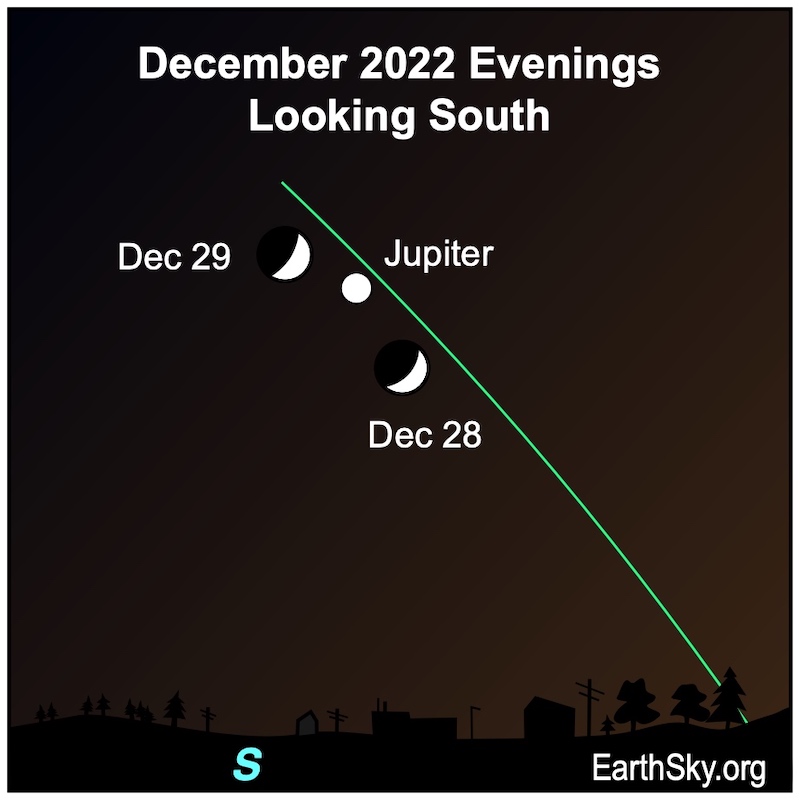
Our charts are mostly set for the northern half of Earth. To see a precise view from your location, try Stellarium Online.
The moon and Jupiter pair up December 28 and 29
Jupiter has been dominant in the evening sky for months and sets a little before midnight local time at the end of December. However, if you haven’t found Jupiter yet, let the moon be your guide to the brilliant planet.
You can see the moon and Jupiter pair up in the evening sky on December 28 and 29, 2022. If you see a bright “star” near the moon on those evenings, it’s the planet Jupiter. You can’t miss them if you look!
In fact, this isn’t the first time the moon and Jupiter have paired up this month. As a matter of fact, the waxing gibbous moon passed by Jupiter on December 1.
The moon and the planets
On December 28 the moon is a fat waxing crescent and sets before midnight. And then the moon reaches 1st quarter at 7:20 p.m. CST on December 29 and sets after midnight.
The 1st quarter moon rises at noon and sets about midnight.
If you follow the moon from night to night, you’ll see it frequently pass by the planets in our solar system.
In fact, the last few days of December offers us a chance to see all five bright planets at the same time. First, you’ll need a clear view from the southwestern horizon through the eastern sky. Then, if you look about 30 minutes after sunset, you can find Mercury and Venus low on the southwestern horizon. Next, look higher in the southwestern sky for a creamy, steady light, which is the planet Saturn. And then, look south to find the brightest “star,” which is the planet Jupiter. Finally, look east, where you can see brilliant Mars near the star cluster Pleiades.
Bottom line: No matter where you live worldwide, let the bright moon be your guide to the dazzling planet Jupiter on the evenings of December 28 and 29, 2022.
For more great observing events in the coming weeks, visit EarthSky’s night sky guide











